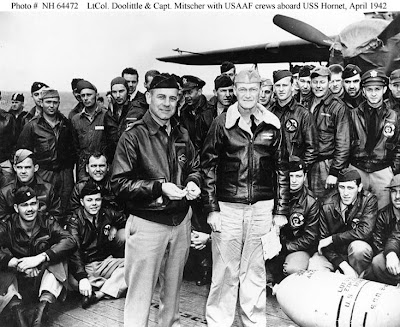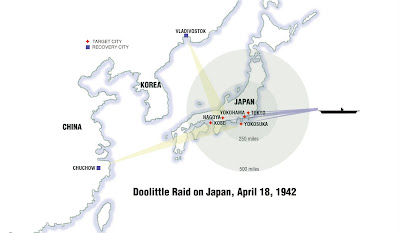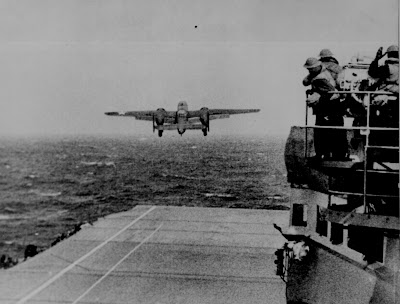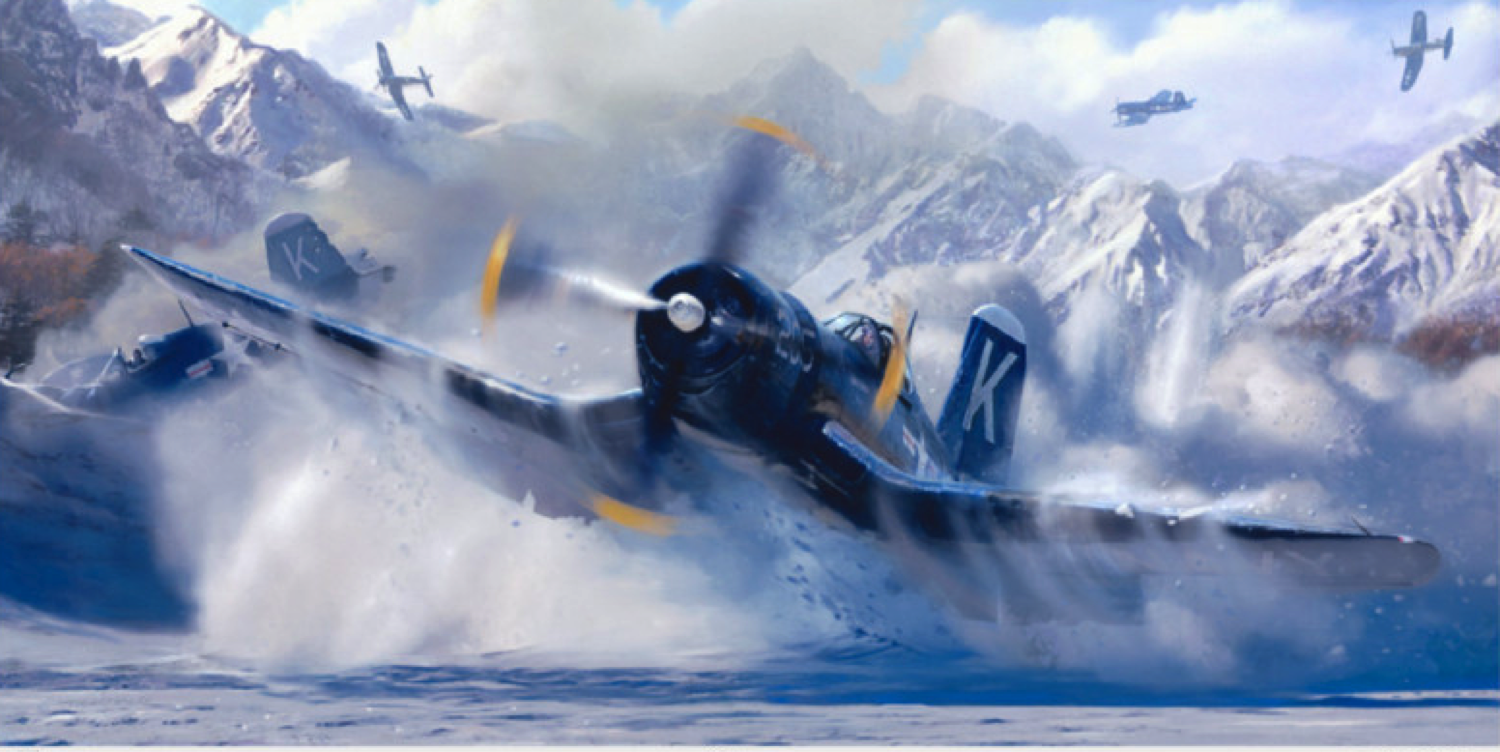Out of the Box Thinking and Execution 68 Years Ago: The Doolittle Raid
Sixty-five years ago. . .
 Conceived in the dark aftermath of the attack on Pearl Harbor, the raid had its genesis in the idea of CAPT Frank Lowe, USN who predicted that Army twin-engine bombers could
Conceived in the dark aftermath of the attack on Pearl Harbor, the raid had its genesis in the idea of CAPT Frank Lowe, USN who predicted that Army twin-engine bombers could  be launched form a carrier under the right conditions. Planned by Lieutenant Colonel Jimmy Doolittle, USA and executed by 16 modified B-25B’s of the 34th BS, 17th BG flying from the deck of the USS Hornet (CV 8) – 650 nm from Tokyo, history was made and an enemy left shocked. The raid took place after only two months of planning and special training with 16 all volunteer crews. More on the raid itself here, here and here.
be launched form a carrier under the right conditions. Planned by Lieutenant Colonel Jimmy Doolittle, USA and executed by 16 modified B-25B’s of the 34th BS, 17th BG flying from the deck of the USS Hornet (CV 8) – 650 nm from Tokyo, history was made and an enemy left shocked. The raid took place after only two months of planning and special training with 16 all volunteer crews. More on the raid itself here, here and here.
North American B-25B Mitchell
The B-25 originated from an Army Air Corps competition that was won by Martin with their B-26 design. The contest was a novel one in that the Army would order the winning design straight into production, by-passing the prototype phase. Despite having garnered almost double North American’s score, Martin was adamant that they were not going to be able to produce the B-26 in the numbers the Army Air Corps wanted – so they awarded North American with the remainder of the contract. The B-26 was fast, rugged and could carry a significant bomb load – outstripping he B-25 in each category. It’s airframe was designed and constructed such that the ability to take punishment was legendary and second only to the B-17. Yet because of its high wing loading, the B-26 was also notable for its fast landing speeds and long takeoff requirements. The B-25, on the other hand, reached production sooner, also demonstrated a capable bomb carriage capability and, for the purposes of this mission, had take-off requirements that suited it for the carrier.
Still, when all was said and done, these were (relatively speaking) big aricraft on a small flight deck. Carriers wouldn’t see the likes of this until after the war with the advent of the specially modified P2Vs for the nuclear mission – and then those were limited to the much larger decks of the Midway-class carrier.
TECHNICAL NOTES:
Armament: Six .50-cal. machine guns; 3,000 lbs. of bombs
Engine: Two Wright R-2600s of 1,700 hp each
Maximum speed: 328 mph
Cruising speed: 233 mph
Range: 2,500 miles (with auxiliary tanks)
Ceiling: 21,200 ft.
Span: 67 ft. 6 in.
Length: 53 ft.
Height: 16 ft. 9 in.
Weight: 29,300 lbs. maximum
Cost: $109,670 (1943)
– SJS








A now-deceased friend who flew B-25s in Europe remarked that the B-25 guys called the B-26 the Flying *****, because its wings were so small that it had no visible means of support.
I think it not insignificant that the “outside-the-box” thinking responsible for the concept came out of the submarine service–by someone with no skin-in-the-game/axe-to-grind, so to speak. I’ve always said (in several places) that Navy types seem to proffer novel problem-solving approaches more than the other branches–mainly, I feel, due to the relative isolation and operational independence which Navy officers have–especially on the graveyard watch or under water–lots of time to think and ponder…
Not to change the subject but I had the exact same experience with ADM Stockdale at medical at NAS North Island. I was starstruck being in the same room with him.